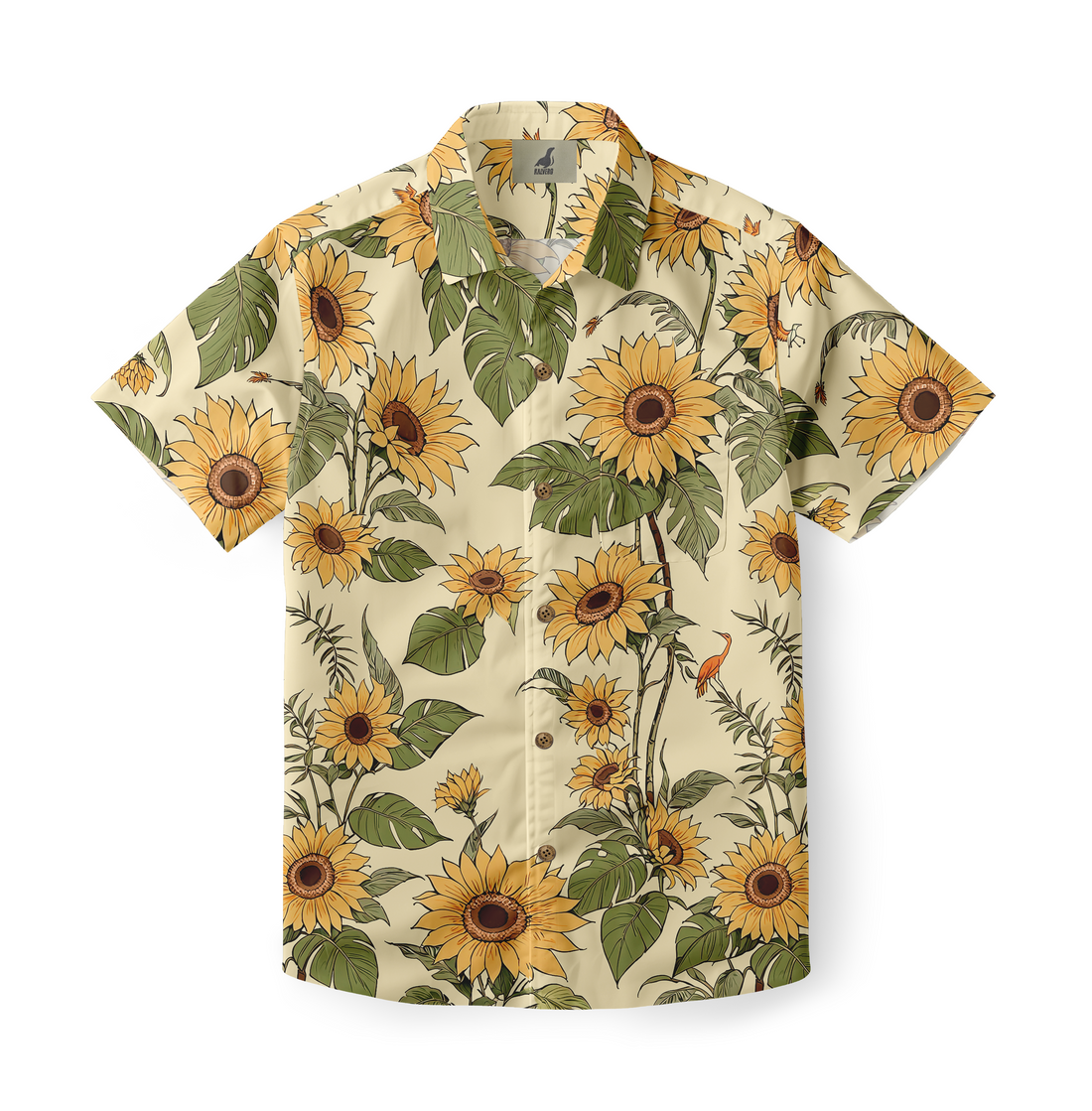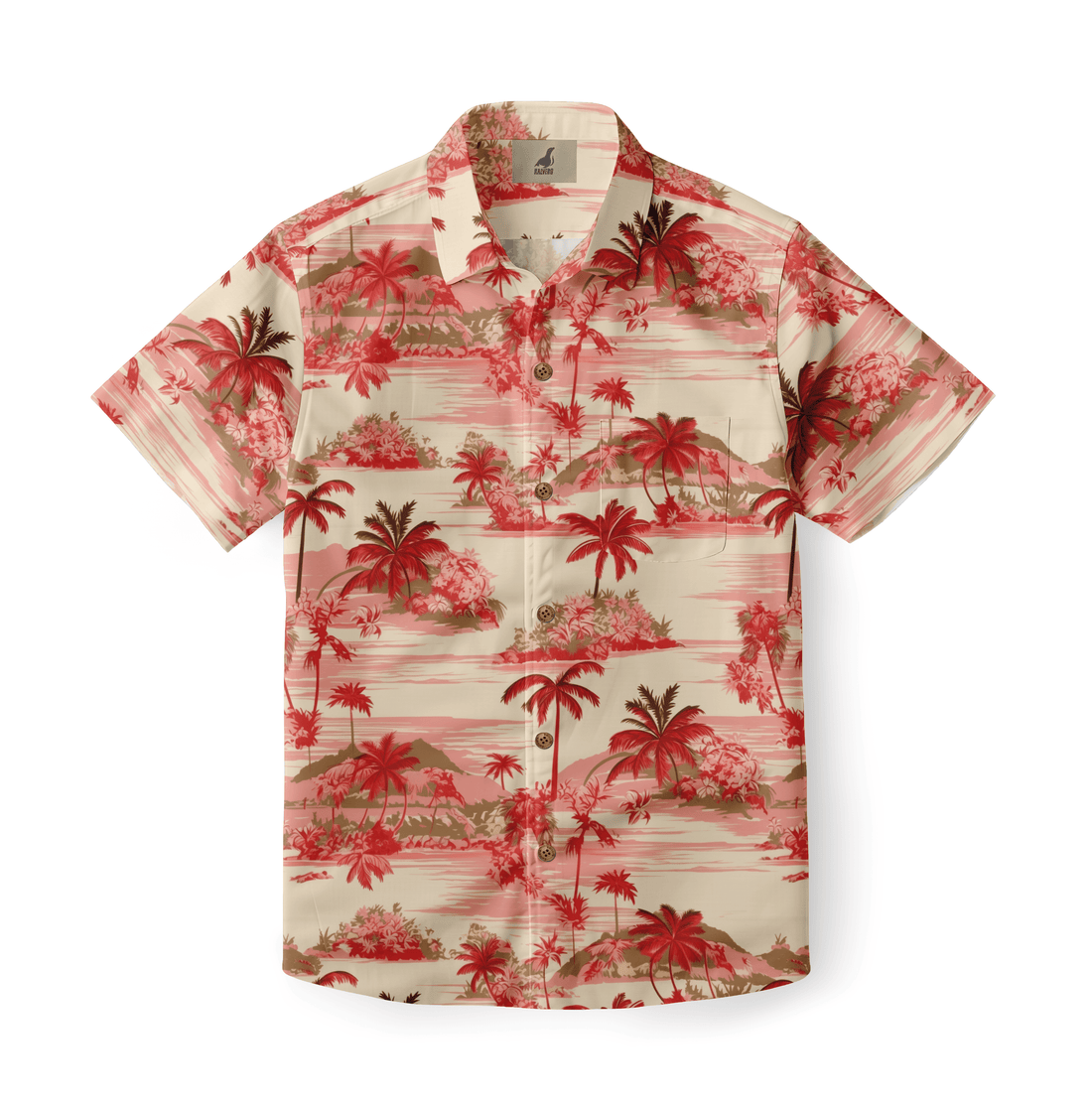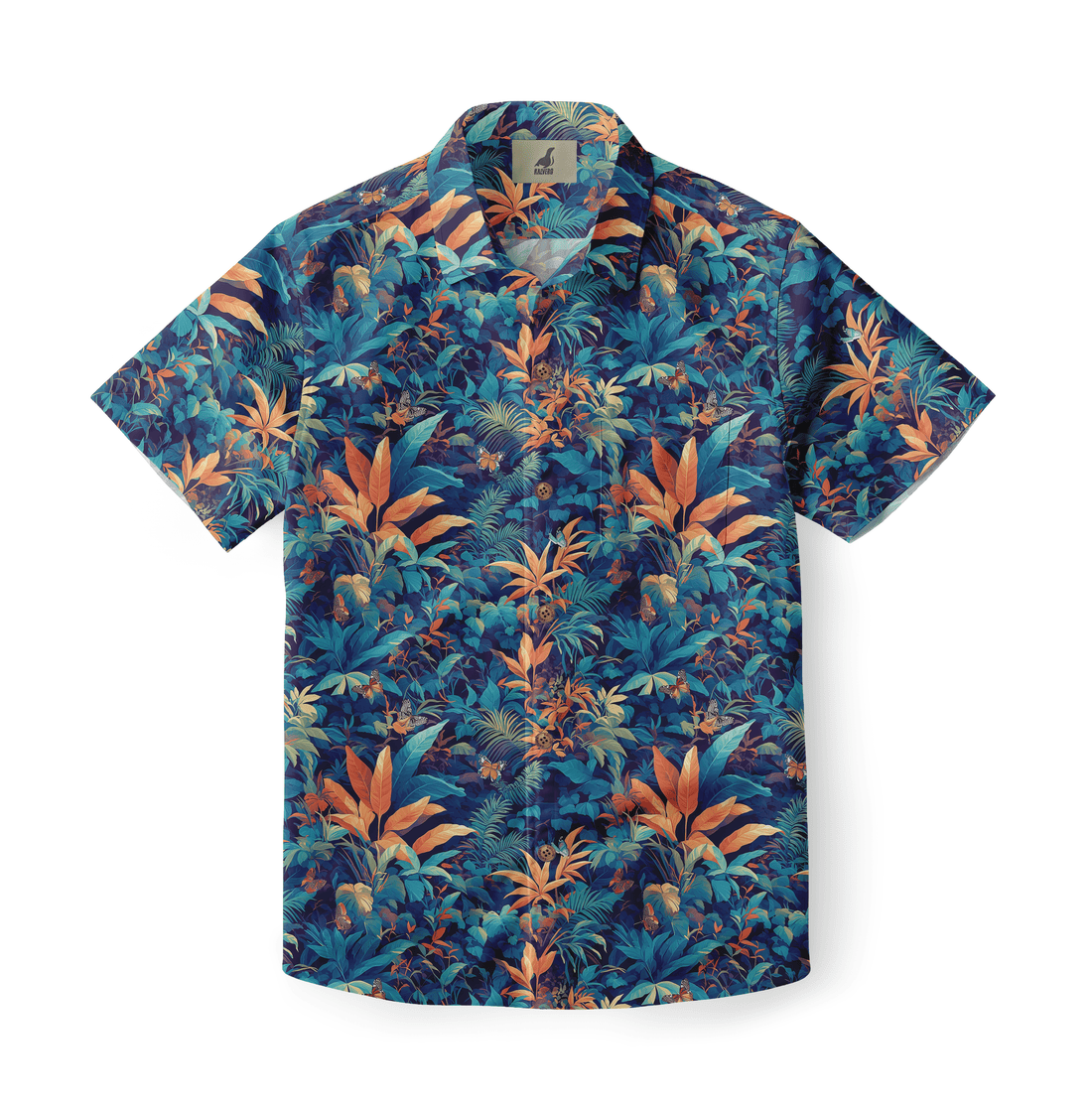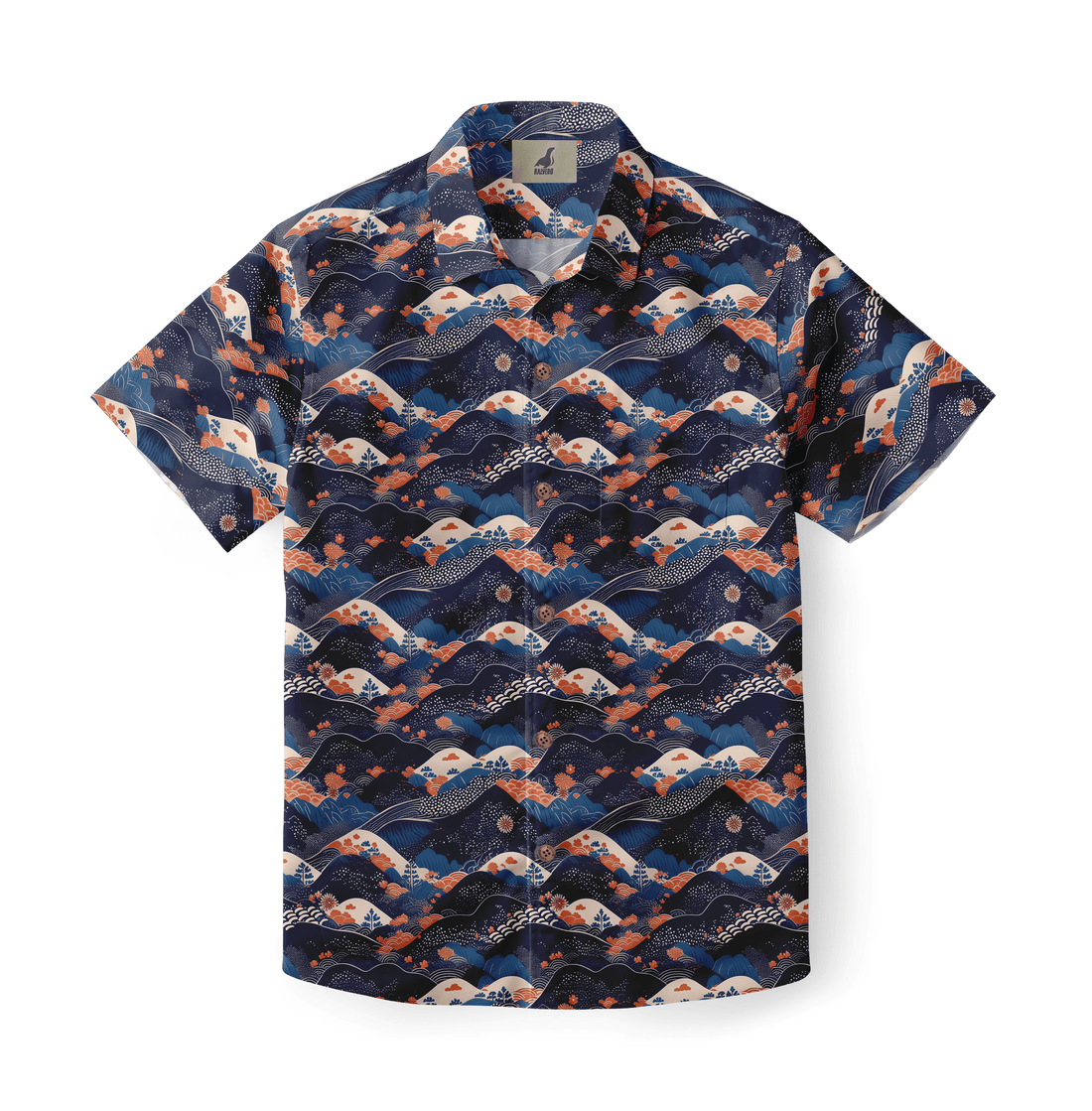Classic Hawaiian Shirt Moments in Vintage Movies anchors a cultural conversation about costume, place, and performance. Filmmakers used aloha shirts to signal leisure, exoticism, or comic relief on camera. Actors wore prints that read clearly on grainy film stocks. Costume departments chose bold motifs for visibility in wide shots. Audiences responded to the shirts as visual shorthand for tropics or altered social codes. Scholars now examine these moments to trace how film shaped popular taste. Preservation efforts highlight original garments in museum displays and archives. Film festivals occasionally screen restored prints to showcase costume detail. Observing these moments reveals the interplay between wardrobe and narrative across several film eras.
Opening context and cultural resonance
Cinema imported the Hawaiian shirt into global wardrobes through repeated screen appearances. Early travelogues and postwar musicals amplified island imagery internationally. Directors often placed aloha shirts on characters who embodied leisure or harmless transgression. Costume designers adapted local motifs to studio aesthetics and technical needs. Many shirt choices reflected the era’s printing technology and dye palettes. Historians note how these scenes shaped perceptions of Hawaii long before statehood. Audiences linked shirts to holiday moods and cinematic romance. The garment carried different meanings in comedy and noir contexts. Tracing these roles clarifies why the shirt persisted in popular culture and fashion cycles for decades.
Star performances and cinematic framing
Stars who donned Hawaiian shirts offset glamour with approachable ease on screen. Performers used shirts to soften masculinity or to add ironic distance. Directors framed characters in medium and wide shots to let prints read clearly. Cameras favored patterns with strong contrast against typical set elements. Choreographed movement often revealed the shirt’s silhouette and motion qualities. Supporting actors sometimes wore matching prints to create visual motifs within scenes. Costumes worked with lighting to generate texture and depth. These design choices influenced how later designers referenced vintage screenwear. Iconic performances made certain shirt styles culturally legible and commercially desirable.
Costume design choices and fabric tech
Costume departments selected fabric types for durability and image fidelity during shooting. Early aloha shirts used rayon and viscose for vivid dye uptake and soft drape. Printed cotton appeared in lower-budget productions where washability mattered. Designers adjusted collar and cuff construction to suit choreography and stunt demands. Seam placement helped maintain clean lines under studio lights. Dye fastness and repeat consistency mattered for continuity across takes. Pattern scale related directly to camera distance and resolution of film stock. Production teams often commissioned custom repeats to avoid brand conflicts. These technical considerations explain many recurring visual patterns in classic Hawaiian shirt moments.
Color, print, and on-screen contrast
Color choices became central to how prints registered on monochrome and color film stocks. High-contrast motifs read better in black-and-white stills. When color film dominated, saturated hues emphasized emotional tone or locale. Costume designers played with scale to prevent moiré effects on early telecine transfers. Florals and palm fronds remained staples because they juxtaposed clearly with human forms. Repeats aligned to body proportion to avoid visual breakup in close-ups. Lighting crews adjusted gels to keep fabric tones natural under incandescent lamps. These combined craft choices produced memorable frames where shirts functioned as active visual elements, not mere clothing.
Character function and narrative role
Writers and directors used aloha shirts to index character type subtly and quickly. A jaunty print could signal carefree wealth or temporary escape. In contrast, a conservative shirt might hint at cultural assimilation or comic discomfort. Costumes sometimes reversed expectations, dressing serious figures in playful prints for ironic emphasis. Matching prints in group scenes created social bonds visually. Directors leveraged these cues to economize exposition without extra dialogue. Costume-driven shorthand allowed audiences to read class, mood, or scene intent at a glance. Studying these narrative uses reveals how small wardrobe choices shaped audience interpretation and emotional response.
Four iconic scene case studies
This section examines four moments where shirts defined a scene’s impact. First, a postwar musical used a bold floral to mark a fantasy sequence. The shirt’s motion punctuated choreography and camera movement. Second, a mid-century noir placed a loud print on a suspect to disarm viewers unexpectedly. Third, a romantic comedy used matching shirts to bind a couple visually across montage. Fourth, an adventure film framed the protagonist’s shirt against jungle greens to heighten contrast. Each case shows deliberate costume decisions that amplified theme and spectacle. Charting these examples helps viewers decode how wardrobe choices translated into enduring cinematic images.
Notable classic Hawaiian shirt scenes
-
Postwar musical dream sequence with coordinated chorus prints
-
Mid-century noir where a loud shirt creates misdirection
-
Romantic road film with couples in matching aloha shirts
-
Adventure serials framing shirts against dense foliage
-
Sitcom pilots using shirts for comedic fish-out-of-water beats
Notable classic Hawaiian shirt scenes explained
These listed moments capture the shirt’s narrative flexibility and visual potency. Musical numbers required fabric that moved elegantly under studio lights. Noir sequences subverted color associations by using patterns to distract from plot cues. Road films used prints to create traveler identity quickly. Adventure films favored contrast between shirt and environment to keep the protagonist visually distinct. Sitcoms used shirts as shorthand for temporary social displacement. Considering each case helps film lovers and designers trace how costume function served story and commerce simultaneously.
| Scene Type | Typical Print | Cinematic Effect |
| Musical number | Bold florals | Rhythmic motion and spectacle |
| Noir subversion | Clashing prints | Distraction and irony |
| Romantic montage | Coordinated shirts | Emotional bonding |
| Adventure setpiece | High-contrast foliage | Hero isolation visually |
Interpreting the pattern table helps curators and costume students prioritize film moments. Bold florals in musicals amplify choreography and joy. Clashing prints in noir create deliberate unease. Coordinated shirts in romance visually narrate connection without exposition. Foliage contrasts in adventure films ensure the lead remains the focal point. Museums and restorers use such mappings when selecting frames for exhibits and interpretative labels. Filmmakers and stylists study the table to recreate classic effects authentically while avoiding cliché.
How to read a scene visually
Reading a scene visually starts with composition, pattern, and actor movement. Camera placement determines how much print detail registers to viewers. Costume can compete with props, so production design must balance pattern density. Pay attention to color temperature and film stock to interpret perceived hue. Actor blocking affects how shirts fold and reveal patterns. Costumes that survive close scrutiny often feature clean seams and stable repeats. Archivists who annotate frames note these production details for posterity. Training the eye to these aspects improves critical viewing and supports faithful restorations for modern audiences.
Preservation, restoration, and archives
Archivists face challenges preserving garments and film prints from classic shirt moments. Fabrics degrade, and dyes migrate over time. Film stocks suffer color shifts that alter shirt tones drastically. Restoration teams cross-reference wardrobe logs, production stills, and surviving garments. Conservation labs run dye tests and stable mounting protocols for textiles. Digital color grading aims to approximate original hue and contrast, guided by archival documents. Museums that display original shirts use controlled lighting to limit fade. Public programming that pairs restored frames with preserved garments educates viewers about technical craft. These efforts keep visual history accessible and authentic.
Influence on contemporary fashion
Contemporary designers mine classic Hawaiian shirt moments for prints and silhouettes. Runway collections reference vintage motifs and cinematic colorways. Streetwear adopts exaggerated proportions inspired by screen shirts. Film festivals often spark limited capsule collections tied to restored screenings. Designers credit archives and museums for research access during collection development. Retailers collaborate with costume houses to license authentic patterns for reissue. This two-way exchange enriches both film culture and fashion economies. Observing cinematic shirt moments reveals enduring design cues that continue to shape consumer taste and professional costume practice.
Final reflections and viewing suggestions
Reflecting on these moments illuminates how small garments shaped large cultural ideas. Classic Hawaiian Shirt Moments in Vintage Movies carried layers of meaning across genres. Viewers can watch with attention to composition, movement, and costume detail to deepen appreciation. Seek restored prints at festivals to see original color and pattern fidelity. Consider visiting costume collections where preserved shirts illustrate construction choices. Curate screenings that pair film clips with archival displays for richer context. These practices help audiences and scholars reconnect contemporary aesthetics with cinematic history and preserved material culture.
Frequently Asked Questions
Which vintage movies show the most iconic Hawaiian shirt moments?
Several films across decades present compelling shirt moments. Start with postwar musicals featuring ensemble dance numbers in island prints. Mid-century comedies and romances provide coordinated couple moments worth studying. Adventure serials and westerns occasionally use prints to mark a character’s temporary exoticism. Noir titles subvert expectations by placing prints on morally ambiguous characters. Directors such as studio-era auteurs chose shirts to leverage visual shorthand. Curated lists from film festivals and costume archives make good starting points for viewing. Supplemental reading in costume journals helps identify production credits and textile suppliers for specific garments. Tracking provenance deepens appreciation for each scene’s craft context.
How did film production techniques influence shirt design on screen?
Film techniques shaped shirt choice through lighting, camera lenses, and film stock decisions. Wide-angle lenses reveal pattern distortion, so designers adjusted repeats accordingly. Studio incandescent lights shifted color perception, prompting dye choices that read well on set. Black-and-white films favored high-contrast patterns to maintain legibility. When color films became standard, saturation and hue choices expanded dramatically. Costume teams coordinated with cinematographers during pre-production to test swatches under intended lighting. Editing rhythm and choreography influenced collar and hem finishes to avoid visual noise during motion. The intersection of technical needs and aesthetic aims produced the shirts that now stand out as classic cinematic markers.
Are restored prints reliable for assessing original shirt colors?
Restored prints provide a close approximation but require contextual verification to match originals precisely. Film dyes age unevenly, and scanning methods influence digital color outcomes. Archivists use production stills, costume receipts, and surviving garments to triangulate original colors. When available, original wardrobe notes guide color-correction decisions during restoration. Some restorations annotate uncertainty in color choices where documentation lacks clarity. Viewing restorations alongside preserved textiles offers the most reliable perspective on original hues. Restoration teams document their decisions to help scholars and designers understand the limitations and choices behind final graded prints.








